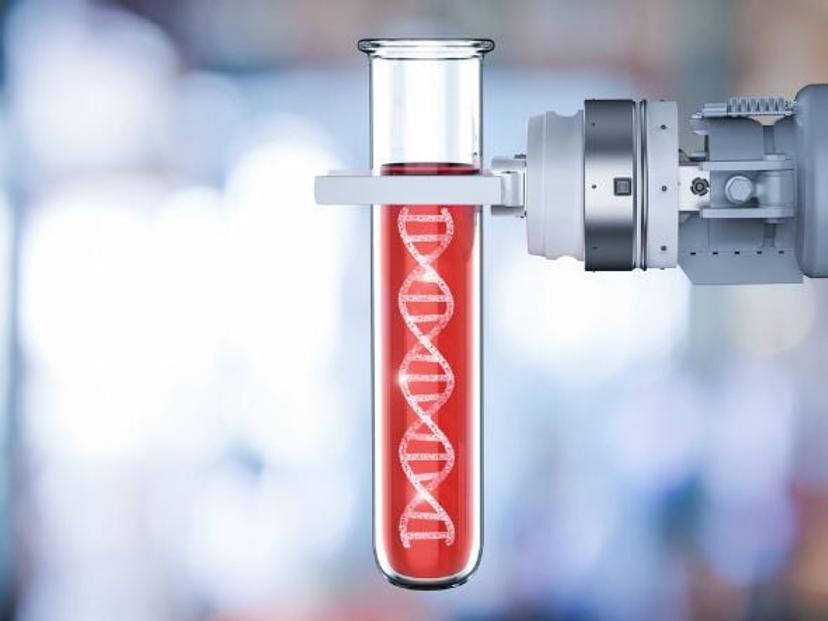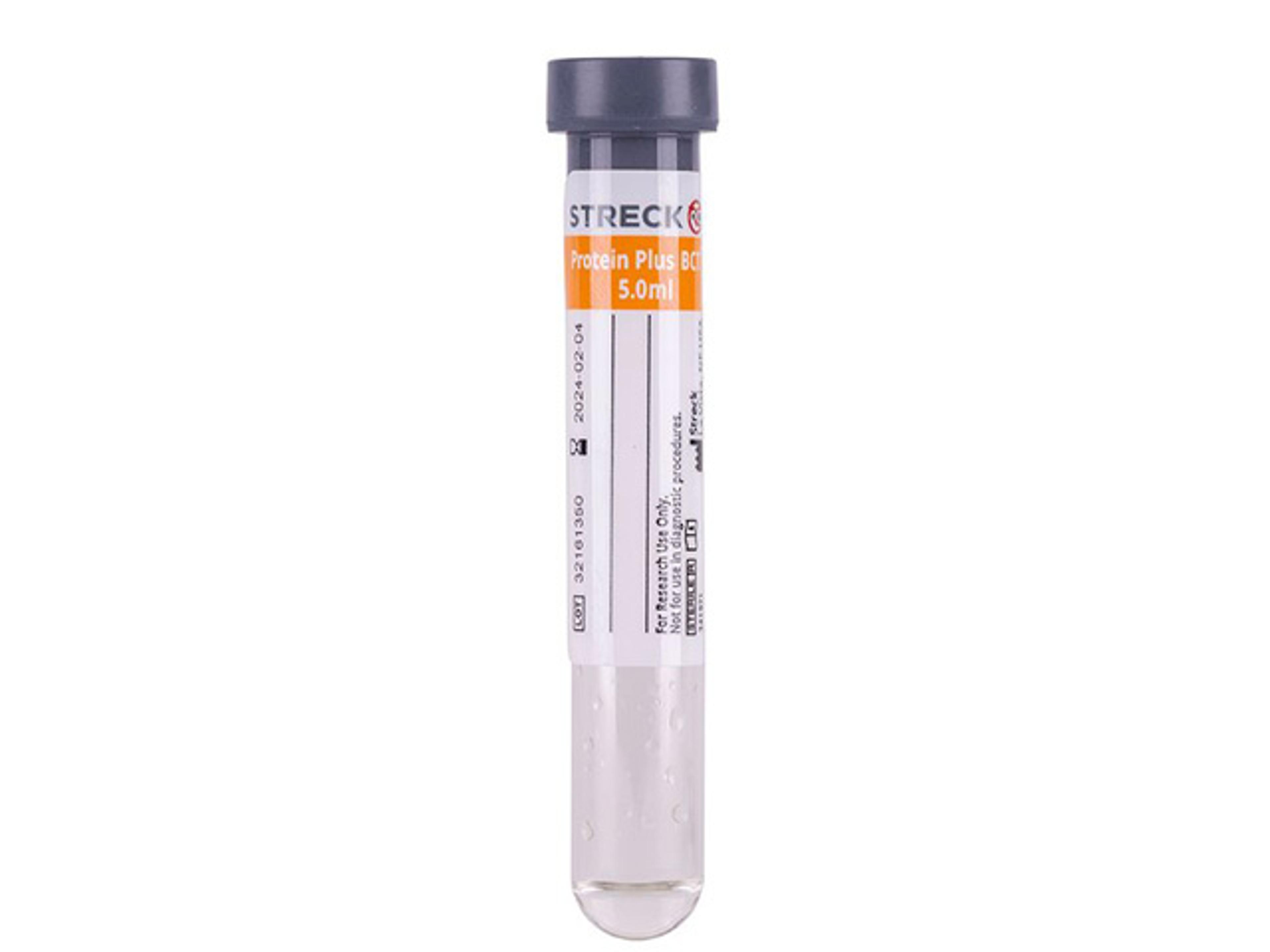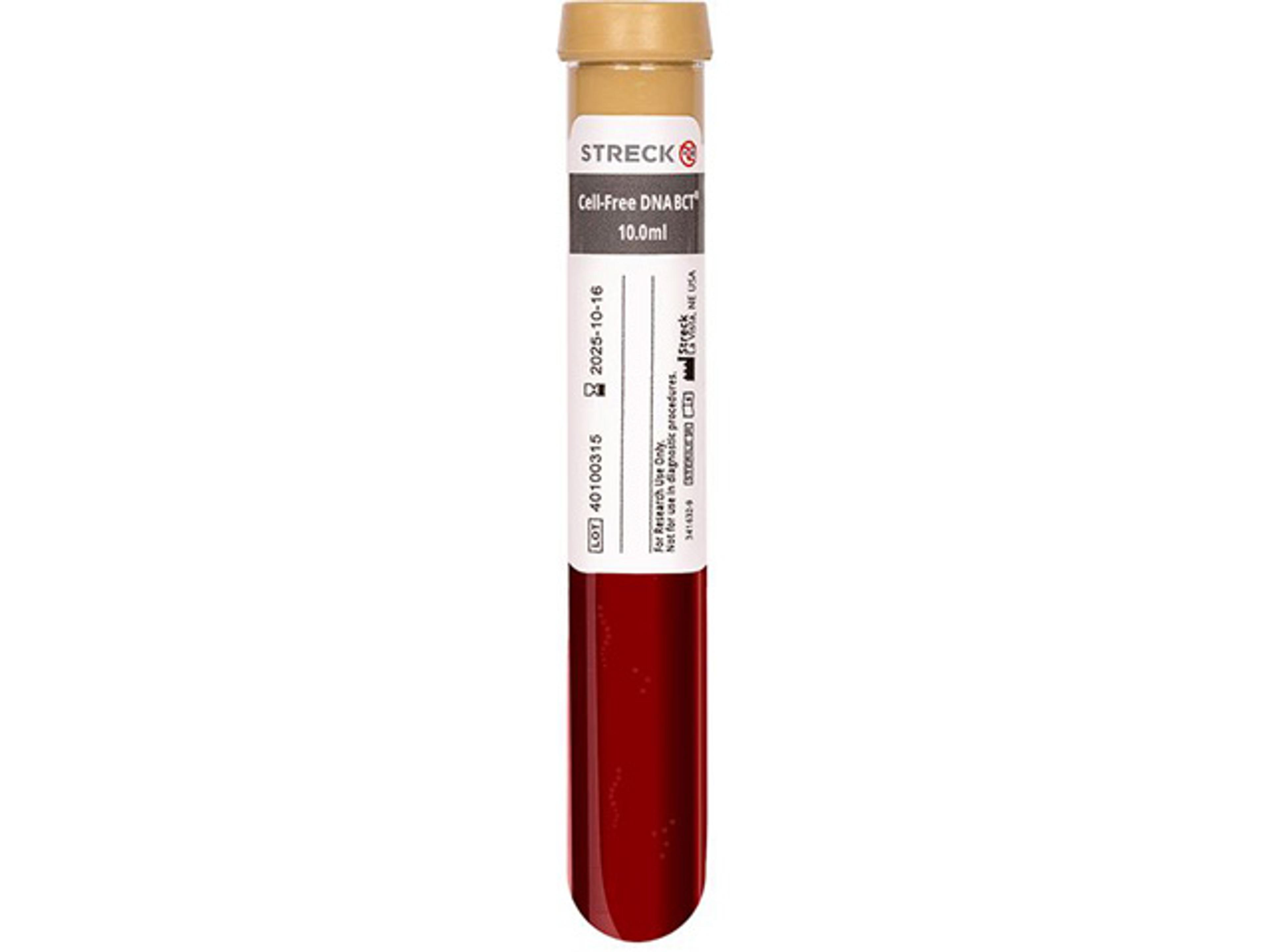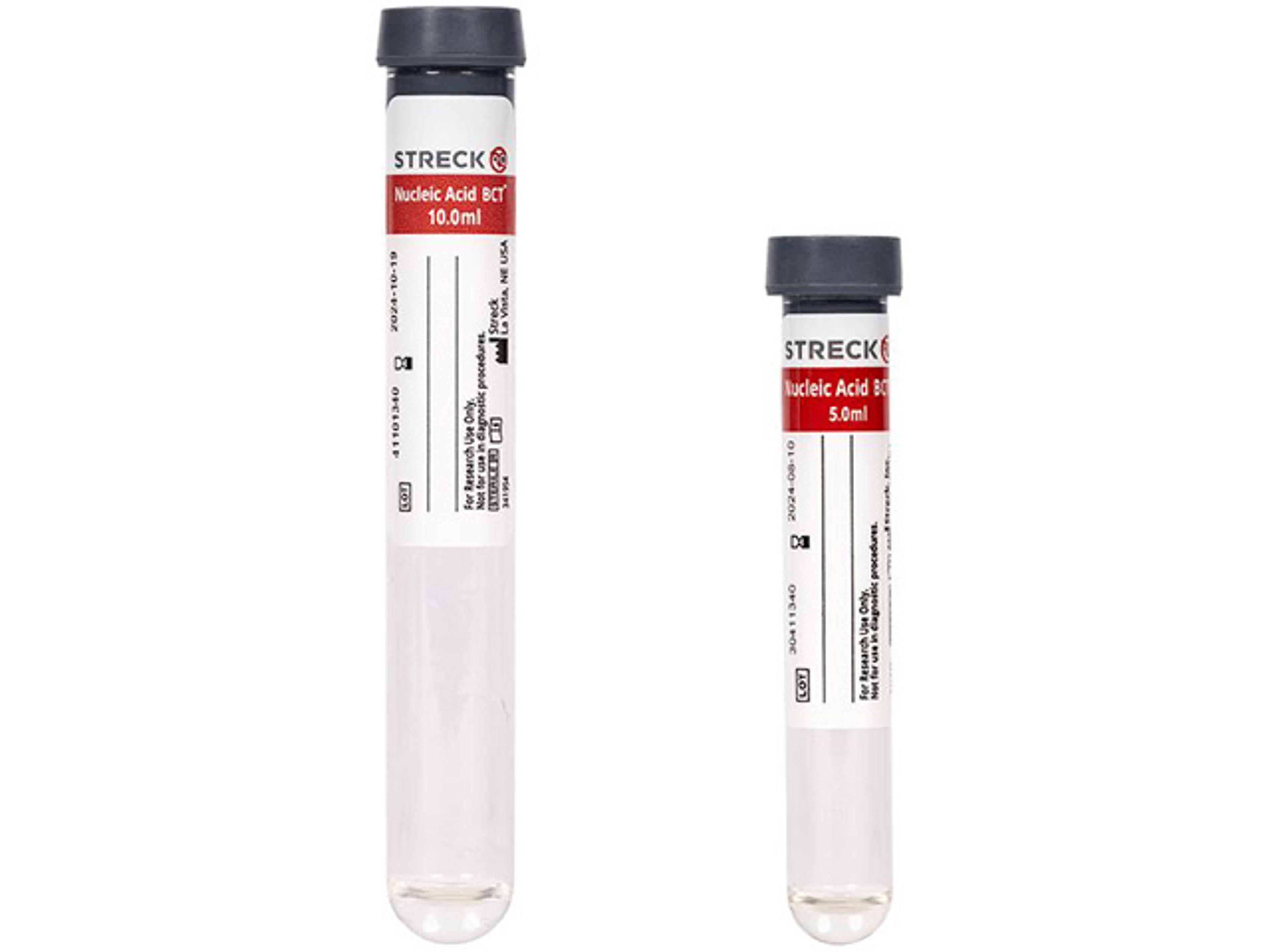Unlock the potential of liquid biopsies to revolutionize cancer detection
Nucleic acids in blood can provide valuable information about cancer, but how can we stabilize them prior to analysis?
15 Jul 2024

Dr. Gary Pestano, Chief Development Officer at Biodesix and Director of Biodesix’s New York State Laboratory in Colorado.
Liquid biopsy represents a cost-effective and repeatable alternative to traditional tissue biopsy for the diagnosis and monitoring of disease1. Blood contains a vast array of potential biomarkers, but cell-free DNA (cfDNA) has emerged as a particularly powerful target for monitoring the presence and progression of cancers. Tumor cells tend to release this form of DNA as they migrate from tumor environments into the circulatory system. Accordingly, the blood of cancer patients contains higher levels of cfDNA (and cell-free RNA [cfRNA]) than the blood of healthy individuals2. The DNA released by tumors can also contain genetic alterations that act as highly specific markers, further aiding cancer detection.
Sample breakdown can complicate the logistics surrounding liquid biopsy because samples need to remain stable until they reach a site with the equipment needed to analyze them. Failure to adequately stabilize the sample can lead to contamination of the specimen by DNA from degrading white blood cells, which reduces the sensitivity of analysis and complicates the detection of circulating DNA from tumors. Many commonly used collection tubes are unable to effectively mitigate the risk of key blood components degrading during transport.
We spoke to expert Dr. Gary Pestano, Chief Development Officer at Biodesix and Director of Biodesix’s New York State Laboratory in Colorado, about the utility of analyzing cfDNA in blood and the potential of the Streck Stabilization Suite to overcome issues regarding stability during sample transport.
A simple solution to a complicated problem
When coupled with other technologies, cfDNA brings great strength and reproducibility to diagnostic evaluations.
Gary Pestano, Chief Development Officer at Biodesix
“We began looking at cfDNA about 12 years ago,” Pestano says. “It was obvious that cfDNA could yield diagnostic information to supplement the insights obtained from tissues and the field grew rapidly as a result. In fact, when coupled with other technologies, cfDNA brings great strength and reproducibility to diagnostic evaluations. The guidance released by the US Food and Drug Administration (FDA) in 2022 is testament to this3.” But the approach is not without its challenges. “When studying cancer we are analyzing relatively rare events,” Pestano explains. “This is because there is a lot of nucleic acid present in blood, which comes from cancer cells but also normal cells that degrade as part of their lifecycle. It’s not like searching for a needle in a haystack – it’s more like one needle in several haystacks.”
This complexity emphasizes the need to stabilize blood for analysis – and for sensitive technologies to detect the nucleic acids of interest once they are recovered. “We were lucky to be referred to Streck,” Pestano says. “They created a preservative in a tube that was designed to maintain cells in blood samples and this increases our odds of finding cancer-associated nucleic acids when conducting analyses. The result is an increase in our capacity to detect the needle amongst the haystacks, so to speak.”
Streck offers three key products for the stabilization of blood samples: Cell-Free DNA BCT®, Nucleic Acid BCT™ (for research use only), and Protein Plus BCT™ (for research use only). Cell-Free DNA is the only cfDNA-stabilizing whole blood collection device cleared by the US FDA for the maintenance of whole blood liquid biopsy samples for up to seven days at 6°C to 37°C following blood draw. The performance characteristics of Cell-Free DNA BCT have only been established on the Guardant360® CDx assay. Nucleic Acid BCT accomplishes the same feat for cfDNA, cfRNA, and extracellular vesicles. Protein Plus BCT maintains draw-time concentrations of plasma proteins during ambient temperature storage (Nucleic Acid BCT and Protein Plus BCT should only be used for research or the development of new assays).

Support beyond the product
“We have worked with Streck for 10 years now,” Pestano explains. “We have engaged in many projects together and fostered a very collaborative culture. Of note, we conducted one project that focused on preserving viral nucleic acids in saliva to support testing for COVID-19. If we have questions or need troubleshooting or technical help, then Streck is always happy to help. They also work directly with us to ensure that expiration dates on the tubes are suitable for the project at hand. The bottom line is that we have found them to be a very reliable manufacturer through the years that we have worked with them.”
If we have questions or need troubleshooting or technical help, then Streck is always happy to help.
Gary Pestano, Chief Development Officer at Biodesix
Though Streck has led the innovation on these stabilization products, others are now entering this space. “With success comes competition,” Pestano says. “Newcomers must learn from Streck’s success by placing an emphasis on quality in manufacturing processes. Products must be produced in alignment with any claims made and the results must be reproducible. Of course, we as scientists will always conduct our own validation studies to ensure products work as advertised, but it’s important that the manufacturer plays their part, too. Streck is very reliable on this front.”
Open new doors in cancer research
Tissue biopsy remains the gold standard for obtaining phenotypic and molecular information about cancers, but blood biopsies can provide valuable supporting information to drive diagnosis and staging. This approach has the potential to open new doors in cancer research. However, maximizing the amount of information that we can extract from small samples will be crucial to protect the patients of tomorrow. As Pestano says, “We work with cancer patients, many of whom are very ill. Sometimes we can only take one tube of blood from these patients. This sample can be as small as 10 mL. Accessing new metabolites will be key to maximizing the value of these small samples. These metabolites could add to the information that we can already gather from blood, such as cell-free nucleic acids and proteins, to paint a more complete picture of the patient’s clinical state. New stabilizing agents will be key to realizing this potential.”
References
Szilágyi M., et al. Circulating Cell-Free Nucleic Acids: Main Characteristics and Clinical Application. Int J Mol Sci (2022).
Stejskal P., et al. Circulating tumor nucleic acids: biology, release mechanisms, and clinical relevance. Mol Cancer (2023).
US Food and Drug Administration. Use of Circulating Tumor Deoxyribosenucleic Acid for Early-Stage Solid Tumor Drug Development; Draft Guidance for Industry; Availability. Available at: https://www.fda.gov/regulatory-information/search-fda-guidance-documents/use-circulating-tumor-deoxyribonucleic-acid-early-stage-solid-tumor-drug-development-draft-guidance (Accessed March 2024).
Audetat A., et al. Analytic and Clinical Validation of a Pan-Cancer NGS Liquid Biopsy Test for the Detection of Copy Number Amplifications, Fusions and Exon Skipping Variants. Diagnostics (Basel). 2022 Mar 17;12(3):729. doi: 10.3390/diagnostics12030729. PMID: 35328282; PMCID: PMC8947661.
Mellert H., et al. Targeted Next-Generation Sequencing of Liquid Biopsy Samples from Patients with NSCLC. Diagnostics (Basel). 2021 Jan 21;11(2):155. doi: 10.3390/diagnostics11020155. PMID: 33494470; PMCID: PMC7912015.
Jackson L.P., Tjoa B.A., Mellert H., Pestano G.A. Development of a TCR beta repertoire assay for profiling liquid biopsies from NSCLC donors. Cancer Drug Resist. 2020 Jun 18;3(3):563–571. doi: 10.20517/cdr.2020.07. PMID: 35582444; PMCID: PMC8992474.
Bowling M., et al. Longitudinal monitoring for the emergence of epidermal growth factor C797S resistance mutations in non-small cell lung cancer using blood-based droplet digital PCR. Cancer Drug Resist. 2019 Sep 19;2(3):912–916. doi: 10.20517/cdr.2019.53. PMID: 35582570; PMCID: PMC8992510.
Mellert H., et al. Development and Clinical Utility of a Blood-Based Test Service for the Rapid Identification of Actionable Mutations in Non-Small Cell Lung Carcinoma. J Mol Diagn. 2017 May;19(3):404–416. doi: 10.1016/j.jmoldx.2016.11.004. PMID: 28433077.



